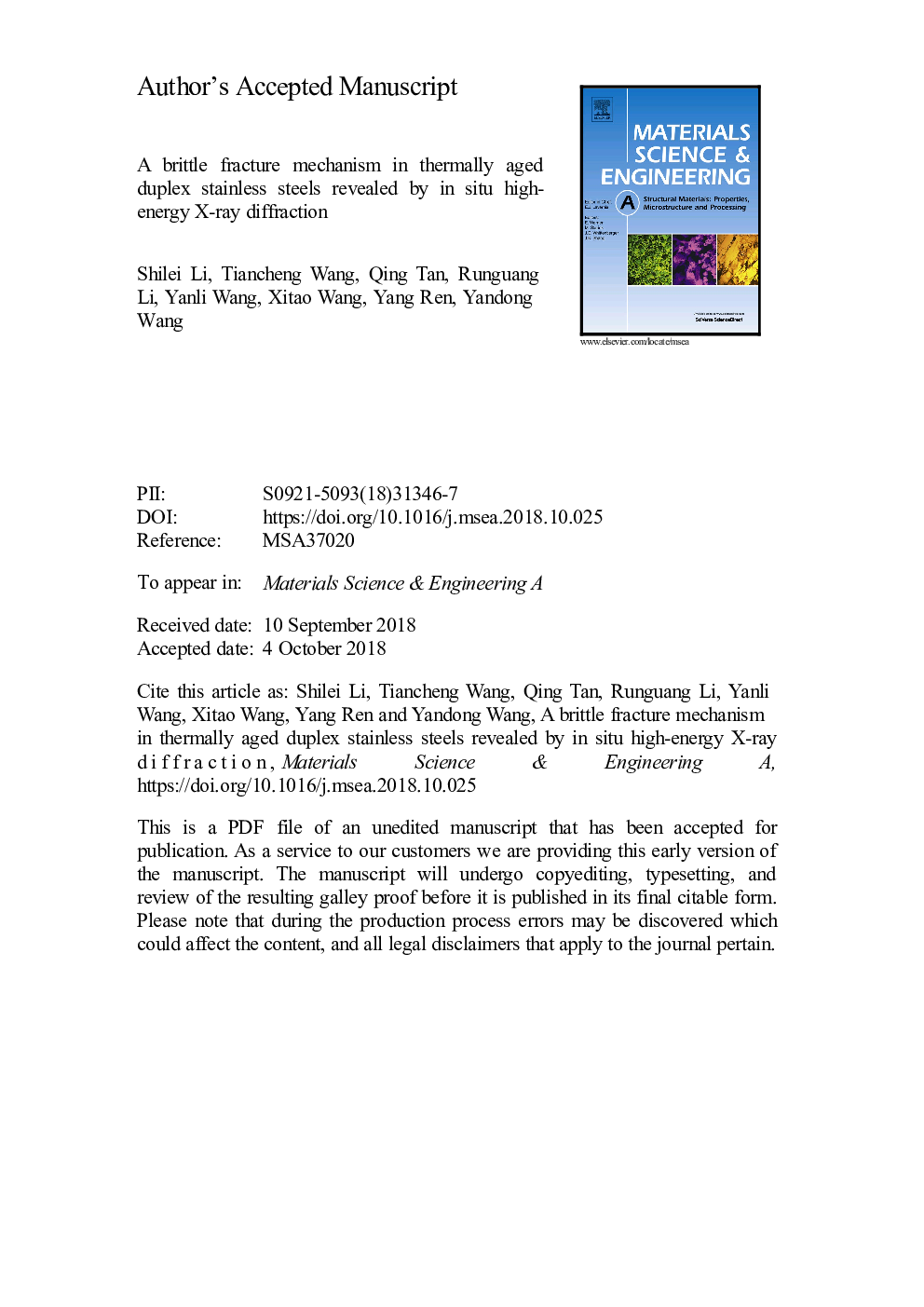| Article ID | Journal | Published Year | Pages | File Type |
|---|---|---|---|---|
| 12055135 | Materials Science and Engineering: A | 2019 | 20 Pages |
Abstract
A direct relationship between the microstructural evolution and macroscopic fracture behaviors of a thermally aged (at 475â¯Â°C for 400â¯h) duplex stainless steel (DSS) has been established with experimental results from atom probe tomography (APT), nanoindentation and in situ synchrotron-based high-energy X-ray diffraction (HE-XRD). The APT experiments demonstrate that ferrite in DSS spinodally decomposes into Cr-enriched and Cr-depleted domains during thermal aging, which leads to a severe hardening effect in ferrite. The lattice strain development during deformation acquired with the in situ HE-XRD measurements confirms the cleavage fracture of α{110} and α{200} ferrite grains aligned perpendicular to loading direction. The thermally aged DSS can be readily fractured by connecting the cleavage cracks in ferrite. The spinodal-decomposition-induced hardening in ferrite and the premature failure of ferrite control the final brittle fracture in the aged DSS.
Related Topics
Physical Sciences and Engineering
Materials Science
Materials Science (General)
Authors
Shilei Li, Tiancheng Wang, Qing Tan, Runguang Li, Yanli Wang, Xitao Wang, Yang Ren, Yandong Wang,
